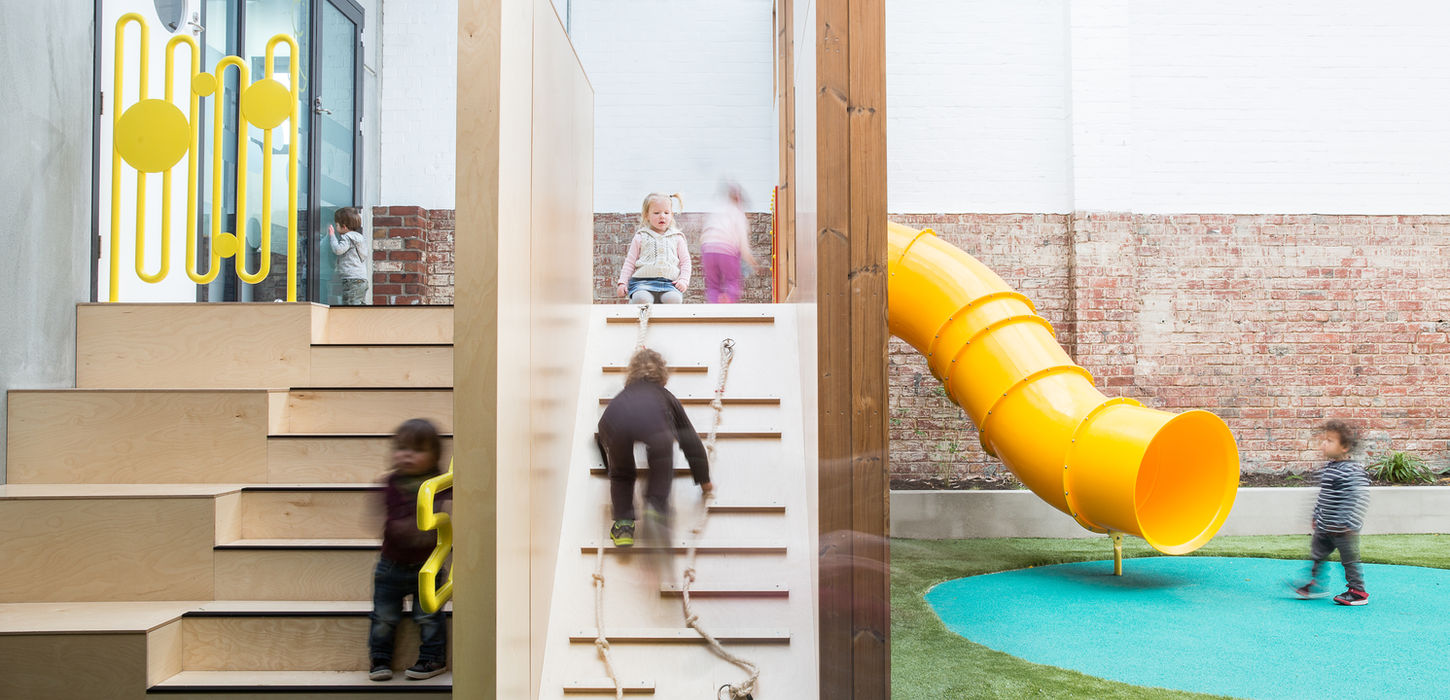A play terrain that blurs the boundaries of age.
Children look at the world differently. So, for this South Hobart childcare centre, we reclaimed our childlike sense of wonder, and put the playful into the would-be ordinary.
Lady Gowrie offers education and care for children in Tasmania. Aiming to integrate the child care, training and community aspects of the business with a 'whole centre' approach, it was important that this new site maintained a non-institutional feel. Acid bright yellows and pinks, stacked and shifted 'Jenga' block storeys, and an orange slide swooping into a sandpit felt more like the vision.
CLIENT
Lady Gowrie Tasmania
IMAGES
Nina Hamilton
LAND OF
muwinina
COLLABORATORS
Futago
Playstreet
Aldanmark
COVA
WT Partnership
AWARDS

Much of our design allows for informal learning opportunities. A loose pinwheel approach fosters vertical circulation, breakout spaces and chance encounters. Transparent spaces also encourage passive observation, creating a learning environment for children and adults alike. We also added climbing walls, interactive joinery and playful balustradees to create visual connections between spaces.
To formally reflect on Lady Gowrie's 'children first' mantra, we positioned children's play at the front of the building, above the public entrance. The entry 'fun tunnel', a collaboration with local artist Judith Abell, also employs art as a device to engage, enthral and distract.
Play meets purpose.
Immersion and imagination.
Watching children immerse in play is one of life's great pleasures. But, as our lead architect Liz watched her daughter engage with Lady Gowrie, she could reflect on how truly this work met the brief, too. When you design for play, it's all in the details. From crocodile hand rails to circular window, this is a space that fully absorbs both big and little people.
It's a place that exudes happiness and transparency, perhaps even moreso than we had first imagined.
The site had formerly been a petrol station, car showroom and mechanics workshop. The warehouses had a raw, utilitarian scale and materiality, marked with automotive paraphernalia. Though at first glance it felt contradictory to the new purpose, we aimed to playfully incorporate this history rather than erase it.
With a joyfulness to appeal to children, our timber-clad design referenced stacked timber blocks. These shifting storeys also created opportunities: double-height play space, a central void allowing sun to throw patterns over the interior, and a lemon tree-filled terrace with mountain views.
Towering timber stacks.



